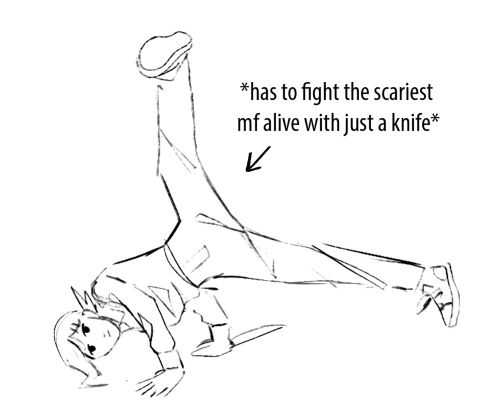DC’s Trinity In And Out Of Costume


DC’s Trinity in and out of costume
More Posts from Emilerry and Others


ena was, in fact, not there for the lessons
tubbo

tubbo
WWC - General Topics

A collection of WWC posts that deal with more general writing advice, character creation and diversity topics applicable to most marginalized people, particularly People of Color and some more specific ethnic and religious groups.
Tools
Writing Research and Google Search Tips
WWC Research & Resources Guides (Compilation)
Character of Color Research Tracking Chart (Google Sheet)
Writing Characters of Color: The Generals
On White Authors “Getting it Right”
The Do’s of Writing People of Color
Writing POC with Little Experience
Properly Coded: Creating Characters of Color
On “Overthinking” Writing Characters of Color
On White Writers Writing Characters of Color (I, II, III)
Researching PoC + Supporting Writers of Color
Description
Words for Skin Tone
Words to Describe Hair
Describing Asian Eyes
Describing Wide Noses
Praising Beauty Without Fetishizing
Describing PoC and Avoiding Caricatures
Featured Description Guides (Compilation)
Diversity & Representation
To Write (or not write) with Diversity
So You Want To Save The World From Bad Representation
Diversity vs. Exploiting Cultures
Diversifying a Predominately-White Cast
On “Diversity Quotas”
On Excluding Diversity Out of Fear
Different Heritage POV’s in a Story
Including Realistic Diversity Naturally
White-Dominant Rural Areas and Diversity
White Privilege, Publishing, and Diversity Quotas
Writing: Making Efforts in Diversity
Characters - Creation & Culture
More on Assigning Race after Writing
Tradition and Culture vs. Stereotype
Showing Culture Writing Advice
Character Creation: Culture or Character first?
Character Design and Assigning Race and Ethnicity
Characters’ Races Added Last During Development
Determining your Characters’ Race and/or Ethnicity
Stereotyped vs Nuanced & Audience Perception
Writing Powerful Women of Multiple Races
Characters - Cultural Disconnect & Erasure
A Discussion on Culture and Erasure
Western Neutral Characters
‘Whitewashed’ Character of Color?
“Culturing” Culturally-disengaged PoC
Characters of Color with “No Culture”
Mixed Race + Disconnect from Culture
Reconnecting to Culture After Assimilation Attempts
Fantasy & Coding
Defining Coding (& Islam-coded Fantasy)
Denoting Race in Fantasy Setting
Fairy Tale Retellings with POC
Fairies of Color & Cultural Fairy Concepts
Fantasy Races Based off of People of Color
Naming People and Places, Avoiding Explicit Coding
Racially-coding Aliens
Real Religions in a Fantasy World
Religion in Fiction & Fantasy
South Asian-Coded Fantasy Caste System
Whitewashing in a Fantasy Setting
Including Racism in Fantasy
World-building: A Fantasy World without Racism
Representing PoC in Fantasy When Their Country/Continent Doesn’t Exist
Race Allegories / Symbolic Racism
Avoiding Racism Allegories
Blue eyed people enslaved in story
Half Human as Allegory for Mixed Race Struggles
Avoiding Half-Human Allegory for the “Mixed Race Experience”
Eye Color Discrimination as Racism: Story Concept
Racism, Micro-Aggressions & Slurs
Everyday Racism, Friendship and White Allies
Incorporating Micro-Aggressions in Writing
Racist Characters + Including Racism in Stories Not “About” Racism
The Pitfalls of Racist Character Redemption Arcs
PoC Educating White Privileged Friend (Context: Black Characters)
On “Normalizing” Protagonists of Color: Writing Stories Where Racism Isn’t in the Plot
Racial Slurs & Offensive Terms
Slur use in stories
Racial Slurs and Webcomics
Portraying Racist Characters without Racial Slurs
Offensive Terminology and Historical Accuracy
Stereotypes & Tropes
Stereotypes & Tropes Navigation
Stereotyped vs Nuanced Characters and Audience Perception
Useful Non-WWC Posts
When Diversity Is Bad by tropesaretools
Diversity Exists in the Real World by shiraglassman
How to Write WOC and MOC if you are White by kaylapocalypse
“I feel pressured to be inclusive in my writing!” by nimblesnotebook
On White Fear & Creating Diverse Transformative Works by saathi1013
Villains / Anti-heroes
Villains of Color
Family of Villains (Black)
Predominately White Villains
PoC Villains, Anti-Villains and Anti-Heroes
PoC in Crime Families & Black/Native Boss
Writing Flawed Black Characters is Okay
Dark and Light-skinned Characters, Black Villain and Avoiding Colorism
Worldbuilding
Black & White Symbolism: a look at that trope
Homogenization, Cultural Appropriation
How To Blend Cultures (Without Making Impossible Mixes)
Research:Large to Small Scale, Avoiding Homogenizing East Asian Cultures, & Paralleling Regions Appropriately
White Saviors, White - POC Interactions
Interracial Relationships: Romantic | Writing Interracial Friendships
How to Avoid Glorifying White Characters
Handling a White Female Savior in story
White Character Adopts Black Child in Apocalypse
White Villainous Cult Leader Uses Fascism to “Correct” Colonialism
How to write bigoted villains without coming off as a bigot yourself
Infantilization of white characters (At PoC’s expense)
Solving World Hunger: Changing Skin to Fantasy Color to Avoid the White Savior
Writing About Your Own Culture (Ownvoices)
Misrepresenting Your Own Culture
Why Insiders Can Write Their Experience
Writing Authentic Black Characters (as a Black writer)
Representing yourself in stories when “yourself” isn’t white
Braving Diversity: How to Write Yourself (and others) out of your Story
Building a Community for Fellow Sci-Fi/Fantasy [Black] Writers of Color
Writing Authentically From Your Own Experiences When They Don’t Match Stereotypes
Writing Sensitive & Controversial Topics
White Authors and Topics to Avoid/Tread Carefully
Do I Need Permission to Write About Marginalized People?
Writing a Genocide to which you have No Personal Connection
On Outsider-Written Stories About Issues Of Another Group
Writing About Diverse Cops (Cops of Color, LGBTQA+)
Outsider-Written Stories, Issues of other Groups, Speculative Situation
Writing about Prejudice between People of Color
Reclaiming negative, dehumanizing stereotypes outside the group
Representing yourself when “yourself” isn’t white
Why do you need to tell this story right now? (Muslim monster focus)
Writing About PoC Trials and Tribulations
When Am I Writing an Identity Story?
To Write or Not to Write: Tackling The “Struggle Novel” as an outsider
–WWC
You’re writing PTSD dreams wrong
But don’t worry, most writers are and I’m here to help because reading them is making me cRAzY.
I’m writing this because I’ve read three otherwise great romance novels back to back featuring characters dealing with PTSD (or PTSD symptoms) and each one of them made the same dream mistakes. I honestly can’t think of a fiction book I’ve read that didn’t make these mistakes, so I thought I’d compile a handy dandy list of mistakes and how to fix them.
Lucky for you, I have PTSD and a ton of fellow veteran friends who deal with these symptoms.
*This is based on my experience and things told to me by friends. This is not to say that the below doesn’t happen in real life, only that it’s not as common as you might think.
The issue with these dreams is twofold: on one side is the psychological accuracy of the dream and on the other side is how you’re using the dream within the narrative.
Oh an Black Sails spoilers-ish ahead.
1) Stop writing the dream as a shot-by-shot accurate retelling of Traumatic Event.
Listen, not only do dreams seldom follow reality, but our own memories are tricky at best. I don’t remember getting beaten up because a) it was horrifying and we block stuff like that out and b) I was going in and out of consciousness. It would be pretty strange for me to dream something I don’t even fully remember. Our brains are simply not wired to do these vivid factually-accurate cinematic retellings.
My friend dreams things that did happen, but in his own words those dreams are always wrong in some noticeable or bizarre way. For instance, he’s getting chased through the streets of Iraq by a werewolf.
2) Dreams are informed by reality, not direct reflections of it.
It’s entirely likely my friend dreamt of a werewolf in Iraq because I got him binge watching Supernatural and the two ideas merged in his dreamstate. But see, that’s how dreams work.
The trauma event exists as a constant in his subconscious, but he has all this other information right there in his conscious mind all day, every day. In dreams, there isn’t a clear delineation between that information.
My dreams are often dependent on whatever I’ve fallen asleep watching on television. The themes are consistent, but not the content.
In Black Sails, Captain Flint’s trauma dreams feature his dead partner and friend following him around his empty ship. You have an element of the trauma (the animated corpse of his friend) + his daily existence (his ship). The two things intersect to form these unsettling nightmares as expressions of his fears and grief. He never once relives the event itself in his dreams as shown on screen.

Speaking of…
3) Trauma dreams often revolve around feelings, not necessarily the events themselves.
The PTSD package generally includes heaps of shame, guilt, anger and fear. As someone who survived a beating when I should have had control of the situation, my dreams tend to revolve around fear that people will know I’m a fraud or being unable to act in a dangerous situation.
Again, it’s entirely common for trauma victims to not remember large chunks (or the whole thing) of the trauma event. So why should their dreams be stunningly accurate? What we remember are feelings. Real strong feelings.

You cannot go wrong if you write your trauma dream around feelings, not a specific event.
4) If you present trauma dreams as expressions of themes, you can let go of the trauma dream as an exposition dump/way overused suspense trope.
You know you’ve read this: MC has dreams that are a shot-by-shot retelling of Traumatic Event that always cut off right before Traumatic Event, so that the Big Reveal must happen by a discovery later in the novel.
If I were the MC in a book, the easy and common thing would be to use the “dream sequence” as an expository retelling of Traumatic Event as a way to give some backstory to why I might be surly, mistrustful, afraid to try something new, whatever, and to clumsily shoehorn in suspense where there doesn’t need to be.
The much more interesting thing might be if my dreams were inconsistent in content but consistent in theme. In one I’m on an alien planet (because I fell asleep watching the Science Channel again) and the ground opens up and I fall into a pit from which I can’t escape because I am helpless. In another a man is watching me while I sleep where I am again frozen and helpless. This would force the reader to think: what is the recurring issue in these dreams? Why is it important? What is this telling me about this character and what happened to her?
It could be a personal preference, but I’d rather see the Traumatic Event either told in narrative flashbacks (not dreams) or verbally retold by the character in question. Let the dreams tell me something deeper about the character. It’s not that I was beat up, it’s that I feel like a failure because of it. One of these things is a shallow factual detail, the other tells you something about me as a person that I’m sharing with you, gentle reader, because talking about this stuff is healthy.
5) The Traumatic Event doesn’t have to be a big secret.
In Black Sails, we know what happened to Captain Flint’s partner. It happened in real time in the show. That didn’t make his uber disturbing dreams less disturbing or mysterious. Fans still debate exactly what the symbolism was and what they were telling us about James Flint in those moments. We do know from the dreams that he was disturbed, obsessed, and also monumentally guilty and blaming himself for what happened.
The mystery was perhaps more heightened by the fact that the dreams weren’t direct reflections of reality. We know who this person was, what she believed, and why she died. That Flint is imagining her screaming silently in his ear is horrifying and discordant with what we know to be factual. This adds emotional complexity to his character and the decisions he’s making while suffering these dreams.

^^^this didn’t happen. It was a dream. A real unsettling dream.
Once you let go of the concept of the trauma dream as a literal retelling and exposition dump, you have the entire dreamscape to work in other narrative elements, like symbolism, metaphor, foreshadowing, etc.
*1st gif source: @idontwikeit
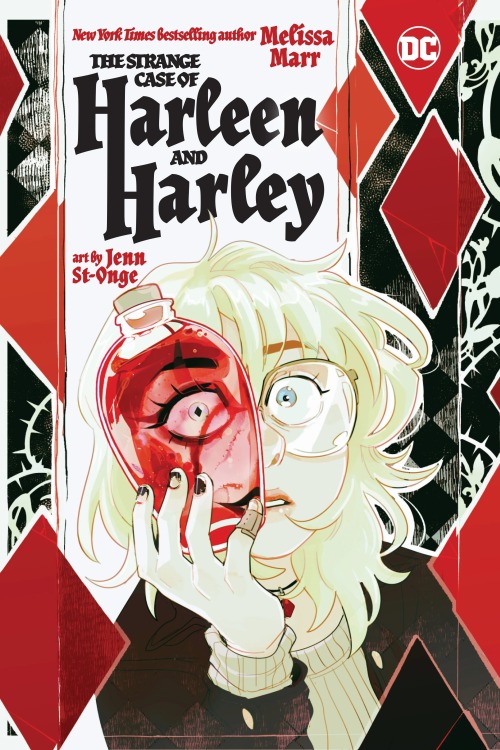
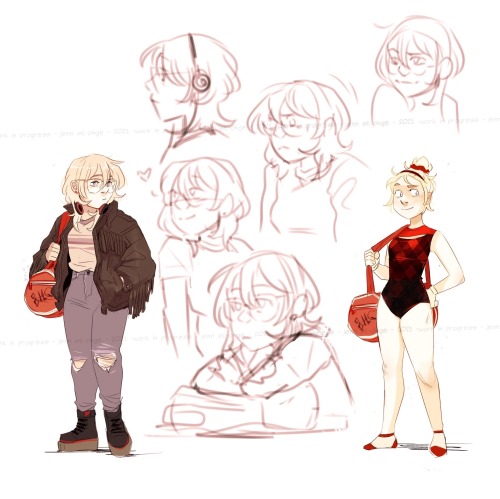
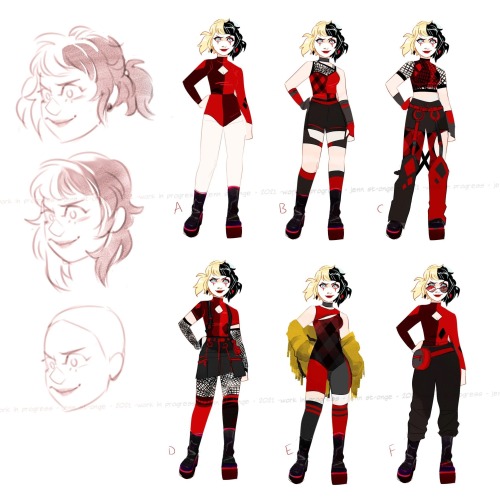
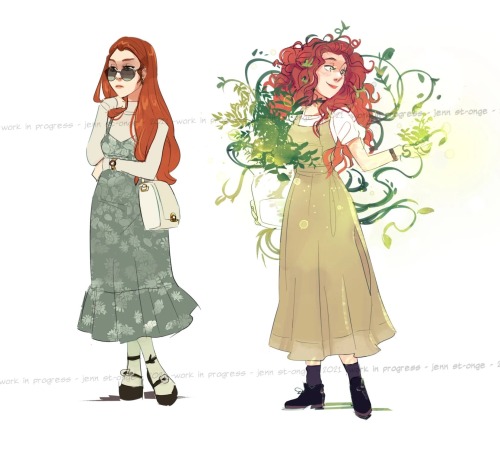
DC is releasing a new take on Harley Quinn's origin story in the upcoming The Strange Case of Harleen and Harley young adult graphic novel.
Announced as part of DC's young adult line, The Strange Case of Harleen and Harley comes from writer Melissa Marr (Wicked Lovely) and artist Jenn St-Onge (Bingo Love).
The synopsis for The Strange Case of Harleen and Harley reads, "When Harleen signs up to participate in a clinical research trial with her girlfriend, Pamela, the most she can hope for is extra cash in her wallet and a chance to get her anxiety under control. But what she gets instead are increasingly larger gaps in her memory and stolen mementos from some guy named Jack she’s never met. Soon, Harleen discovers she’s sharing her life with Harley—a take-no-prisoners, who-cares-about attendance, maybe-we-oughtta-save-the-bunnies kind of girl. She is the opposite of Harleen in many ways. She is anarchy in a cute dress. And in this Jekyll and Hyde story, Harleen discovers that maybe evil ain’t so bad—as long as she doesn’t get caught."
The Strange Case of Harleen and Harley releases on May 2, 2023
-
 yupthatsoundsright liked this · 1 week ago
yupthatsoundsright liked this · 1 week ago -
 lurkinere liked this · 2 weeks ago
lurkinere liked this · 2 weeks ago -
 rainclues liked this · 3 weeks ago
rainclues liked this · 3 weeks ago -
 nao-crow liked this · 3 weeks ago
nao-crow liked this · 3 weeks ago -
 neatlybrittlemammoth liked this · 3 weeks ago
neatlybrittlemammoth liked this · 3 weeks ago -
 protomenfan200x liked this · 1 month ago
protomenfan200x liked this · 1 month ago -
 kyat-o-line liked this · 2 months ago
kyat-o-line liked this · 2 months ago -
 makunaa30 liked this · 2 months ago
makunaa30 liked this · 2 months ago -
 hello-raspberry-monster liked this · 2 months ago
hello-raspberry-monster liked this · 2 months ago -
 dedflorescence liked this · 2 months ago
dedflorescence liked this · 2 months ago -
 bleedinghearthypocrit liked this · 2 months ago
bleedinghearthypocrit liked this · 2 months ago -
 vampxygen liked this · 2 months ago
vampxygen liked this · 2 months ago -
 imaginebeingabot reblogged this · 2 months ago
imaginebeingabot reblogged this · 2 months ago -
 uhwhathappenedhere liked this · 2 months ago
uhwhathappenedhere liked this · 2 months ago -
 magicandrainmagicalrain liked this · 2 months ago
magicandrainmagicalrain liked this · 2 months ago -
 galaxy-poupee liked this · 2 months ago
galaxy-poupee liked this · 2 months ago -
 ben10nerd reblogged this · 2 months ago
ben10nerd reblogged this · 2 months ago -
 ben10nerd liked this · 2 months ago
ben10nerd liked this · 2 months ago -
 rantblog-no1 reblogged this · 2 months ago
rantblog-no1 reblogged this · 2 months ago -
 rantblog-no2 liked this · 2 months ago
rantblog-no2 liked this · 2 months ago -
 almost-a-realboy reblogged this · 2 months ago
almost-a-realboy reblogged this · 2 months ago -
 hydroxycyclone reblogged this · 2 months ago
hydroxycyclone reblogged this · 2 months ago -
 theforceisstronginthegirl liked this · 2 months ago
theforceisstronginthegirl liked this · 2 months ago -
 mysanaf reblogged this · 2 months ago
mysanaf reblogged this · 2 months ago -
 mysanaf liked this · 3 months ago
mysanaf liked this · 3 months ago -
 thewildmeridian liked this · 3 months ago
thewildmeridian liked this · 3 months ago -
 neptune-god-of-the-sea liked this · 3 months ago
neptune-god-of-the-sea liked this · 3 months ago -
 slasherslut883 liked this · 4 months ago
slasherslut883 liked this · 4 months ago -
 killingvote reblogged this · 4 months ago
killingvote reblogged this · 4 months ago -
 popopipoo liked this · 4 months ago
popopipoo liked this · 4 months ago -
 thelightwillbreakthrough liked this · 4 months ago
thelightwillbreakthrough liked this · 4 months ago -
 nooses-give reblogged this · 5 months ago
nooses-give reblogged this · 5 months ago -
 three-times-is-the-charm-zany reblogged this · 5 months ago
three-times-is-the-charm-zany reblogged this · 5 months ago -
 three-times-is-the-charm-zany liked this · 5 months ago
three-times-is-the-charm-zany liked this · 5 months ago -
 cherrytearz liked this · 5 months ago
cherrytearz liked this · 5 months ago -
 blllurghhh liked this · 5 months ago
blllurghhh liked this · 5 months ago -
 newtsflar3 liked this · 6 months ago
newtsflar3 liked this · 6 months ago -
 welpthisisboring liked this · 6 months ago
welpthisisboring liked this · 6 months ago -
 zabbyzee liked this · 6 months ago
zabbyzee liked this · 6 months ago -
 luluandmychaitea liked this · 6 months ago
luluandmychaitea liked this · 6 months ago -
 ethereal-but-real liked this · 6 months ago
ethereal-but-real liked this · 6 months ago -
 huh184 liked this · 6 months ago
huh184 liked this · 6 months ago -
 lemonimilkk liked this · 7 months ago
lemonimilkk liked this · 7 months ago -
 miniaturelightfun reblogged this · 7 months ago
miniaturelightfun reblogged this · 7 months ago -
 lemonofdestiny reblogged this · 7 months ago
lemonofdestiny reblogged this · 7 months ago -
 lemonofdestiny liked this · 7 months ago
lemonofdestiny liked this · 7 months ago -
 kore-of-the-underworld liked this · 7 months ago
kore-of-the-underworld liked this · 7 months ago -
 pixelsnakev456-blog reblogged this · 7 months ago
pixelsnakev456-blog reblogged this · 7 months ago -
 pixelsnakev456-blog liked this · 7 months ago
pixelsnakev456-blog liked this · 7 months ago -
 dragon-enjoyer liked this · 7 months ago
dragon-enjoyer liked this · 7 months ago


